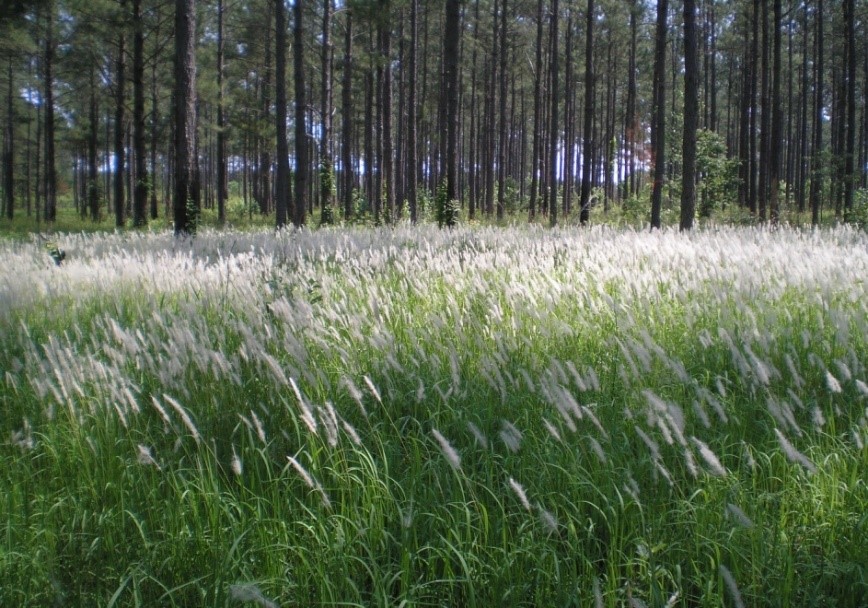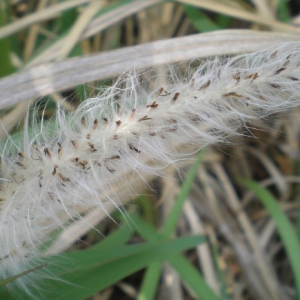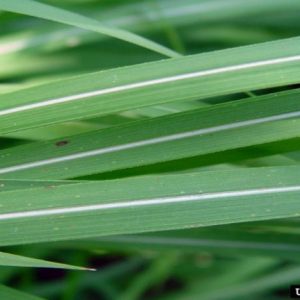Written by Lynne Womack, Forest Health Coordinator
As the weather warms up and we all start to get out and about more, the signs of spring are all around us. At GFC’s Forest Health Department, spring is the start of our early detection season. The majority of this early detection work is done by placing insect traps around the state. These include southern pine beetle, emerald ash borer, gypsy moth traps, and an entire program dedicated to the early detection of insects around our ports and other high-risk areas of introduction (warehouses and rail lines). Another part of our early detection program that gets ramped up each spring is our Cogongrass Eradication Program. Cogongrass is one of the world’s worst weeds and since its introduction in 1911, it has been spreading almost unchecked across the Southeast. Once cogongrass becomes established in an area, it chokes out native vegetation and becomes a monoculture of just cogongrass. It also burns hotter than our native grasses and creates serious fire hazards in areas where it has become established. Initially, it was thought that it could be good forage for livestock, but it turns out it is actually not palatable to any wildlife or grazing animals due to the high amount of silica in the blades, which scratches animals’ throats.

Georgia’s Cogongrass Eradication Program has a two-pronged approach: education and eradication. Our program has been educating professionals and landowners and tracking and eradicating cogongrass for over 16 years. And, we have been more successful at keeping this invader in check than any other state. The education part of this program uses workshops and presentations to educate landowners, consulting foresters, natural resource professionals, government agencies, and utility right-of-way workers on the dangers of cogongrass and how to identify it. This education proves to be successful with an average of 100 new locations annually, with a record of 156 new cogongrass locations reported in 2021. The second part of the program is eradication. Eradication is completed through site-specific herbicide treatments conducted by GFC’s Forest Health Program specialists. These treatments are done at no cost to the landowner. Once the area is sprayed with herbicide, GFC foresters return to the site annually to determine if the spraying was successful or if follow-up treatments are needed. When a site
is visited for three consecutive years with no cogongrass found, that site is marked as eradicated. Even eradicated sites get follow-up visits to ensure this invasive weed has not returned. The success of this program is shown in the fact that 86% of the 1,666 known cogongrass locations in Georgia have been eradicated.
What to look for –
Spring is one of the easiest times to identify cogongrass with its white, fluffy seed heads showing from April to June. Other ways to identify cogongrass are by the bright green blades with a slightly off-centered white midrib. It is also identifiable in the winter by its golden-brown color after the first heavy frost. And finally, another identifiable feature is its extremely dense root system with sharp, pointed rhizomes that can be found when you dig up a small patch.
How to report it –
You can report any suspected cogongrass locations to your GFC forester, local
GFC office, or through our online reporting system. Each of these reported sites is visited by one of GFC’s Forest Health specialists to confirm it is cogongrass. Once a positive identification has been made, the site-specific prescription for herbicide application is made based on other vegetation in the area.
So as you are traveling in the woods or down the road, if you notice the fluffy, white seed heads blowing in the breeze from April through June, be sure to report it. To learn more about cogongrass or report a possible location visit: https://gatrees.org/cogongrass-in-georgia/.



Hello, I have noticed something in my flower bed, does it kinda look like wheat? Does it stick in your clothes, and eventually it sticks you? Please let me know, I know it’s not been here before this year,
Hi Patsy.
Thank you for your inquiry. Please contact our GFC Forester in your area to help with identifying the plant.